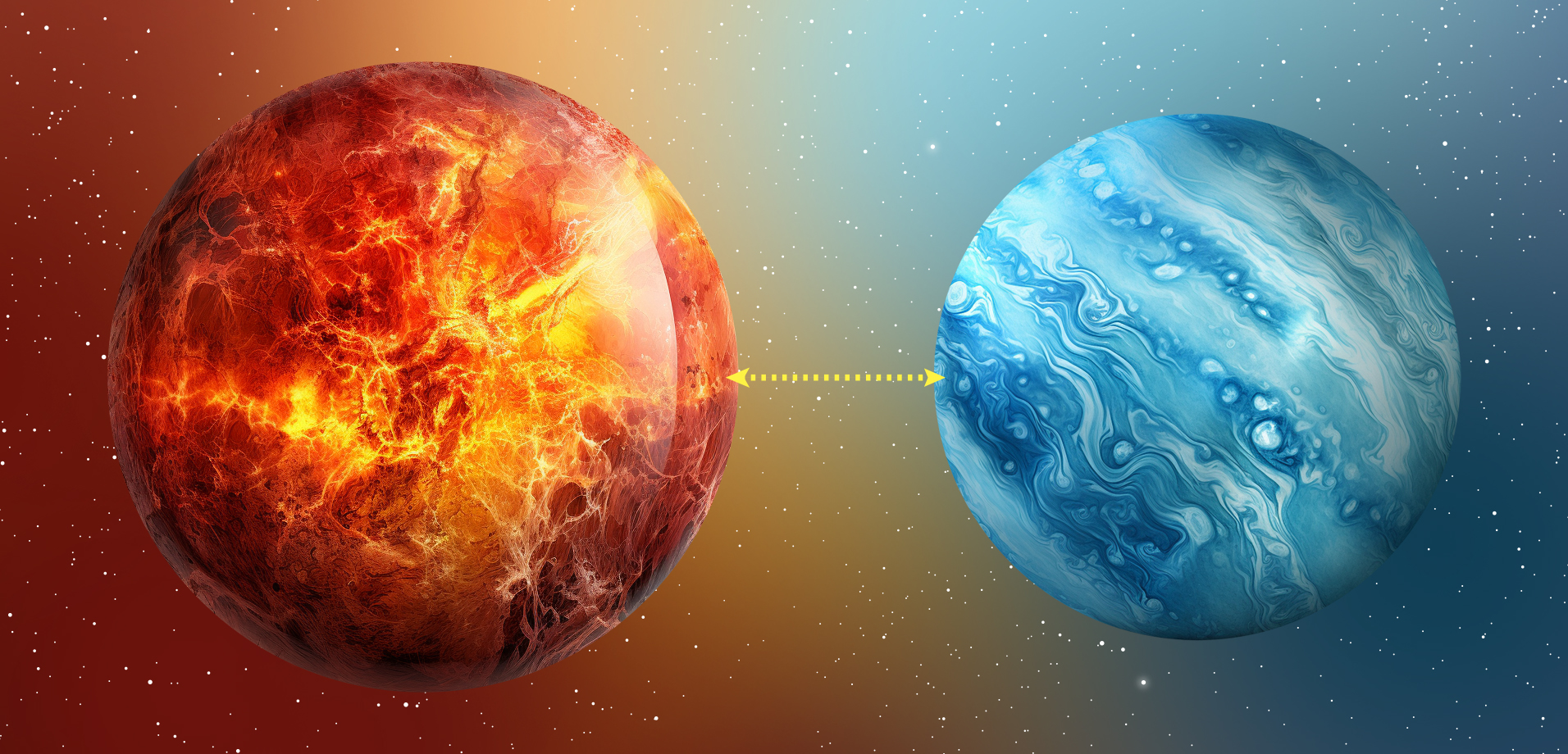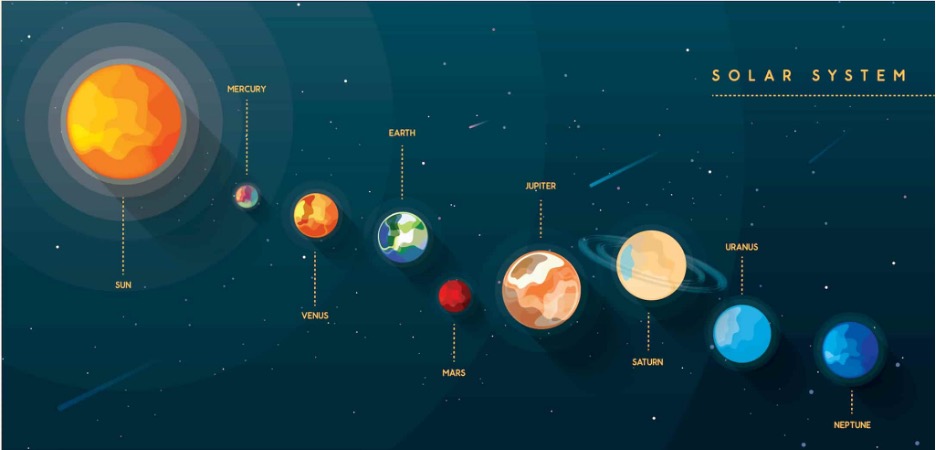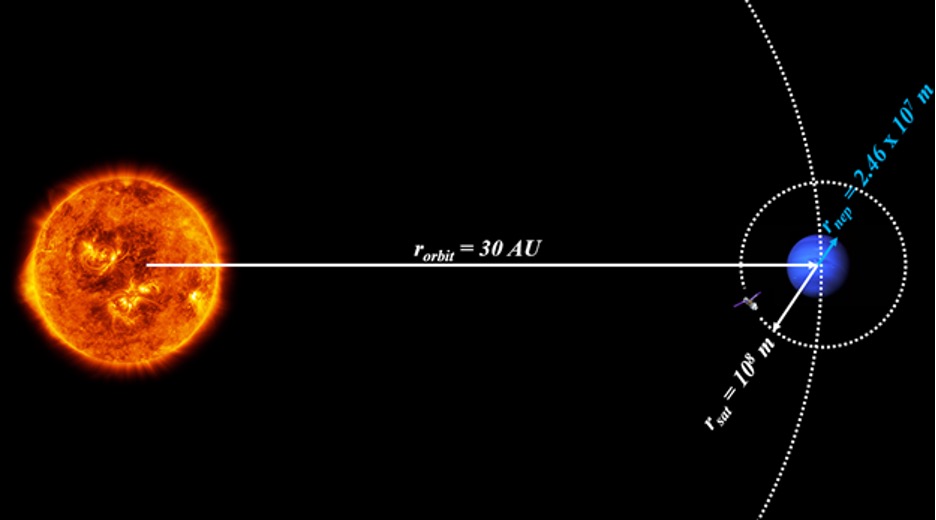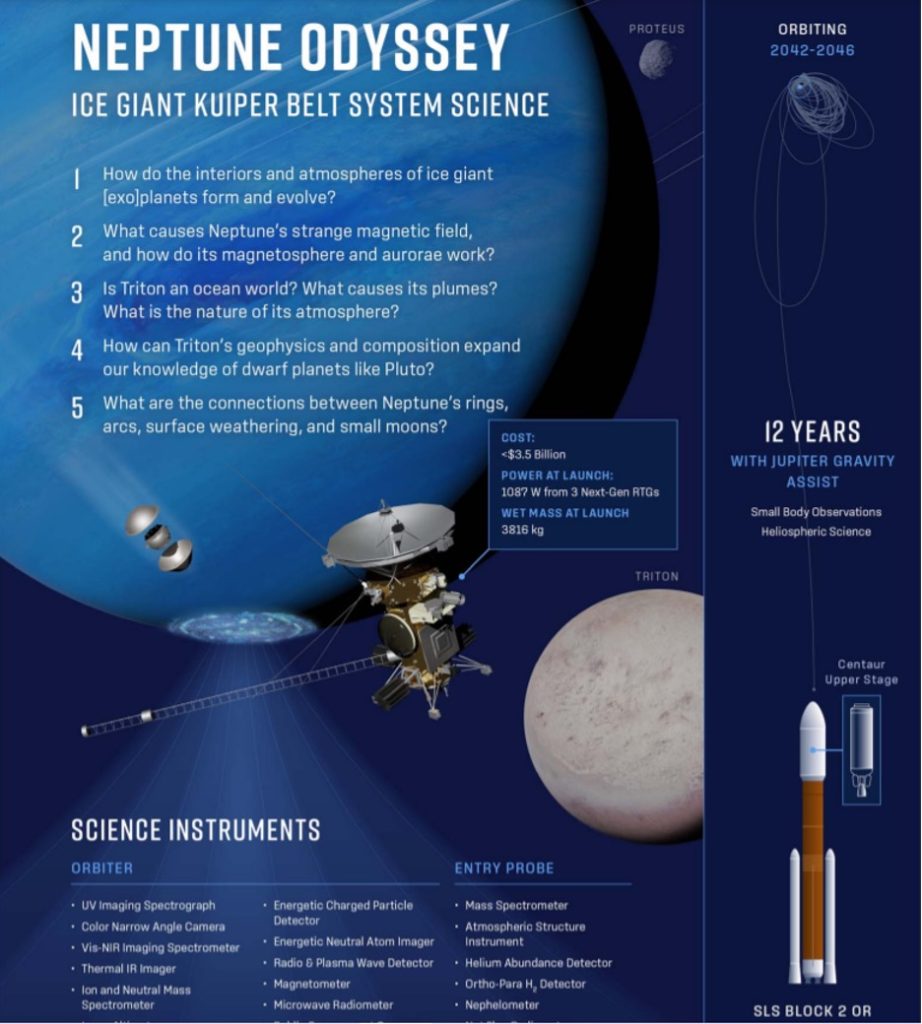How far is Neptune from the Sun
17th Oct 2023
A planet’s distance from the Sun determines how much energy it receives from it, and for living beings, there is what we call the Goldilocks Zone. If there is too little or too much energy from the Sun, the planet is not suitable for life as we know it. We are lucky. The Earth is the third planet from the Sun, and its distance makes for comfortable living conditions, at least for us. But what about the rest of the planets? Today let’s consider how far is Neptune from the Sun and how this distance affects the planet.
What is the farthest planet from Earth?

Of course, it’s Neptune. The eighth and farthest planet from the Sun in the solar system was discovered in 1846 through mathematical calculations, which made it possible to find it in the sky with telescopes and confirm its existence. At the time, scientists could not even imagine how far away is Neptune from the Sun; they simply saw a celestial body shrouded in marvellous azure clouds resembling the depths of the sea, so they decided to name it in honour of the Roman deity governing the seas and streams.
We haven’t learned much about the blue giant since then, but these 12 facts about Neptune will give you a better idea. Of course, the long distance from the Sun and the Earth has complicated the research. In the era of space flights, only one probe has overcome this distance and visited the planet.
In 1989, NASA’s Voyager 2 spacecraft flew over the planet’s North Pole at a distance of about 5,000 km. Its images and measurements helped discover Neptune’s rings and 6 satellites. But the flight of Voyager 2 lasted twelve years. In comparison, it took the ship 18 months to reach Jupiter, the fifth planet from the Sun, and nine years to reach Uranus, the seventh planet.
How far is Neptune from the Sun in kilometres?
Neptune revolves around the Sun in an elliptical orbit, and the distance from Neptune to the Sun changes. The closest point of the planet’s orbit to the Sun (perihelion) is 4.46 billion km (2.77 billion miles), and the farthest distance (aphelion) is 4.54 billion km (2.82 billion miles).
It may seem that the difference in numbers is insignificant, but let’s imagine what 0.5 billion miles is on the Earth’s scale. That’s 24,000 Earth’s equators, or 24,000 flights from Glasgow to Sydney and back! It would take 130 years to cover such a distance by plane.
How far is Neptune from the Sun in AU?

The average distance from Neptune to the Sun is approximately 30.07 astronomical units (AU). One astronomical unit is considered to be the average distance from the Earth to the Sun, equal to about 149.6 million km or 92.96 million miles. Thus, the average distance from the Sun to Neptune is about 30.07 times the distance from the Earth to the Sun.
What is Neptune’s current distance from the Sun?
There is no exact answer to this question. Due to the great distance from the star, the orbit of Neptune is incredibly large, and its one full rotation takes 165 Earth years! But in 2021, scientists did some calculations. Every month on the 15th, they measured Neptune’s current distance from the Sun, and here are the results (data taken from in-the-sky.org):
| Month | А.U. | Miles | Km |
| January | 29,9267 | 2 781 860 549 | 4 476 974 467 |
| February | 29,9262 | 2 781 814 071 | 4 476 899 688 |
| March | 29,9257 | 2 781 767 594 | 4 476 824 869 |
| April | 29.9251 | 2 781 711 820 | 4 476 735 110 |
| May | 29,9254 | 2 781 656 047 | 4 476 645 351 |
| June | 29,9239 | 2 781 600 273 | 4 476 555 592 |
| July | 29,9234 | 2 781 553 795 | 4 476 480 793 |
| August | 29,9228 | 2 781 498 022 | 4 476 391 034 |
| September | 29,9223 | 2 781 451 544 | 4 476 316 235 |
| October | 29.9219 | 2 781 414 361 | 4 476 256 396 |
| November | 29.9213 | 2 781 358 588 | 4 476 466 637 |
| December | 29.9207 | 2 781 302 815 | 4 476 076 879 |
As you can see, in 2021, Neptune grew a half a million miles closer to the Sun.
Does the Sun shine on Neptune?
With the distance from Sun to Neptune being so great, a logical question arises: do the Sun’s rays reach the blue planet? They do, but in small amounts — the planet receives 900 times less energy than the Earth. Although light has no mass and travels at 300 km/s, it does not instantly reach distant objects. To reach the Earth, that is, to travel a distance of 1 astronomical unit, a ray needs 8 minutes 20 seconds, or 500 seconds. Since Neptune’s distance from the Sun was about 29.9 AU in 2021, it is easy to calculate that the Sun’s rays hit the planet after 29.9 x 500 = 14,950 seconds or about 4.15 hours.
But if the light does reach it, is it always cold and dark on Neptune? It is, and the reason is not only the great distance but also the albedo (reflective power) and the characteristics of the atmosphere. Neptune’s albedo is approximately 0.29, which means that it only reflects 29% of all the light that hits it. And the deep layers of atmospheric gases scatter and absorb light.
How far away is Neptune from Earth?
It would seem that the answer to this question is simple, since we already know the distance from Neptune and from Earth to the Sun and can subtract the smaller value from the larger one. But even here, not everything is so clear-cut. The distance between Neptune and Earth is constantly changing due to their orbits around the Sun.
The average distance from Earth to Neptune is about 4.3 billion kilometres (approximately 2.67 billion miles). However, given the orbits’ elliptical shape and inclination axis, this distance can vary from about 4.3 billion to about 4.7 billion kilometres (2.67 – 2.92 billion miles).
It is worth noting that even during the closest distance to Neptune, this planet still remains a distant object in the sky and is not visible to us with the naked eye. One needs a telescope to see it.
How far is Neptune from other planets?
The average distance from Neptune:
- to Mercury — 2.76 billion miles;
- to Venus — 2.73 billion miles;
- to Mars — 2.66 billion miles;
- to Jupiter — 2.31 billion miles;
- to Saturn — 1.31 billion miles;
- to Uranus — 1.01 billion miles.
Note that, just like with the Earth, these distance values are approximate and may vary due to the eccentricity of the planets’ orbits and their respective rotation around the Sun.
The new Neptune Odyssey

So, Neptune’s distance from Sun is about 4.5 billion km. It is the most distant planet in the solar system and the most unexplored one. All we have now is maths and speculation, along with a few Voyager and James Webb shots. In 2016, NASA planned to send a new mission to the blue giant, but the agency decided to postpone it until 2031. If the Neptune Odyssey is not sent directly to Neptune but uses the gravity of Jupiter, then, just like it was with Voyager, the flight will take twelve years, and the probe will overcome the high distance by 2043. Although who knows? Perhaps, SpaceX will deliver the probe sooner.






Thank you for your comment! It will be visible on the site after moderation.